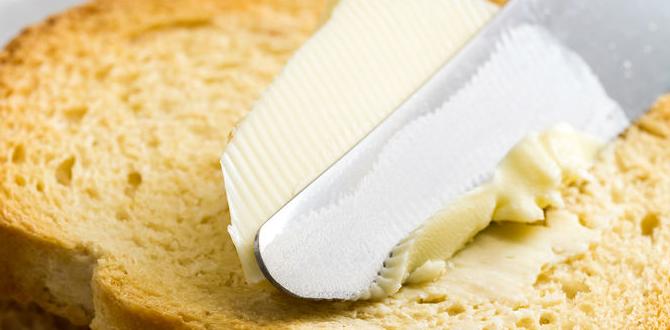Quick Summary:
For larger, stronger joints in framing or trim, choose a 16-gauge nailer. For finer, less visible work like delicate trim, cabinetry, or furniture, an 18-gauge nailer is usually better. They use thinner nails for a discreet finish.
Hey there, DIYers and aspiring woodworkers! Jack Shaffer here, your Nailerguy. Have you ever stood in the tool aisle, faced with two seemingly similar nail guns – a 16-gauge and an 18-gauge – and wondered, “Which one do I actually need?” It’s a common puzzle, and the wrong choice can lead to frustration or less-than-perfect results. But don’t worry! Making this decision is easier than you think, and I’m here to guide you step-by-step. We’ll break down what makes them different and where each shines, so you can pick the perfect tool for your next project and build with confidence.
Table of Contents
16 Gauge vs. 18 Gauge Nailers: What’s the Difference?
At its core, the “gauge” of a nailer refers to the diameter of the nails it fires. The higher the gauge number, the thinner the nail. This simple difference has a big impact on what projects each nailer is best suited for.
Understanding Nail Gauge
Think of it like this: a 16-gauge nail is thicker and stronger than an 18-gauge nail. This means a 16-gauge nail can hold bigger pieces of wood together with more power, while an 18-gauge nail will leave a smaller, less noticeable hole.
Here’s a quick visual:
- 16 Gauge Nails: Thicker, stronger, leaves a slightly larger hole.
- 18 Gauge Nails: Thinner, less impact, leaves a very small hole, often called a “brad nail.”
This distinction is key to understanding why you’d pick one over the other. It’s all about the demands of your project!
Projects Perfect for a 16 Gauge Nailer (The Workhorse)
When your project needs serious holding power and the nail head might be less of a concern, the 16-gauge nailer is your go-to tool. These nailers are built for tasks where durability and strength are paramount.
Why Choose a 16 Gauge?
- Stronger Hold: The thicker nails provide greater holding power, essential for structural integrity.
- Less Likely to Split Wood: While still a possibility with any nail, the slightly wider head can help distribute force, reducing the chance of splitting denser woods compared to thinner nails driven with extreme force.
- Ideal for Trim and Moldings: Think baseboards, crown molding, window casings, and door frames. These elements need to be securely attached to walls and ceilings, and a 16-gauge nail is perfect for the job.
- Light Framing and Woodworking: For smaller projects like building shelves, attaching cabinet backs, or even light framing in certain DIY scenarios, a 16-gauge nailer can be very effective.
- DIY Furniture Assembly: If you’re building sturdy pieces of furniture that don’t require a completely invisible fastener, a 16-gauge can offer a good balance of strength and finish.
Imagine installing thick, substantial baseboards. You want those boards to stay put, even with temperature fluctuations and the general wear and tear of a home. A 16-gauge nail ensures that bond is solid. Or think about building a robust workbench; the stronger fasteners contribute to overall stability.
When to Be Cautious with a 16 Gauge
While versatile, a 16-gauge nailer isn’t ideal for every situation:
- Very Delicate Trim: For thin, fragile decorative trim pieces, the larger nail head might be too noticeable.
- Fine Furniture Work: If you’re building heirloom-quality furniture where every fastener must be hidden or incredibly subtle, you might need something even finer.
- Materials Prone to Splitting: Very soft woods or thin veneers can still be susceptible to damage from 16-gauge nails, especially if not pre-drilled.
Projects Perfect for an 18 Gauge Nailer (The Detailer)
When precision, a clean finish, and minimal visual impact are your top priorities, the 18-gauge nailer is the star of the show. These are often called “brad nailers.”
Why Choose an 18 Gauge?
- Discreet Finish: The small nail heads leave tiny holes that are very easy to fill and often disappear, especially when painted. This is crucial for visible trim and decorative work.
- Ideal for Delicate Trim and Moldings: Think of small chair rails, delicate picture frame moldings, or even decorative accents where you don’t want a nail head to detract from the design.
- Cabinetry and Furniture Building: For assembling drawers, attaching cabinet doors, creating decorative overlays, or piecing together fine furniture, the subtle fastener is key.
- Craft Projects: Any small-scale woodworking or craft project where you need to join pieces without bulky fasteners benefits from an 18-gauge nailer.
- Less Risk of Splitting Thin Materials: The thinner nails are less likely to split delicate wood pieces or veneers than their 16-gauge counterparts.
Consider a project where you’re adding decorative trim around a mirror or building a small keepsake box. You want the focus to be on the wood and the craftsmanship, not the nails holding it together. An 18-gauge nailer achieves this seamlessly.
When to Be Cautious with an 18 Gauge
While excellent for detail, 18-gauge nailers have limitations:
- Structural Applications: They do not have the holding power for framing or attaching heavy trim.
- Thick or Dense Wood: For very thick or dense hardwoods, the thin nails may bend or fail to drive fully, and the holding power might be insufficient.
- Projects Requiring High Strength: Anything that needs to bear significant weight or withstand strong outward forces is not a candidate for 18-gauge nails alone.
Key Differences at a Glance: 16 Gauge vs. 18 Gauge Nailers
To help solidify your understanding, let’s look at the core differences side-by-side. This table highlights the main characteristics that will influence your decision.
| Feature | 16 Gauge Nailer | 18 Gauge Nailer |
|---|---|---|
| Nail Diameter | Thicker | Thinner |
| Nail Head Size | Slightly larger | Very small (brad head) |
| Holding Power | Higher | Lower |
| Hole Size After Firing | Noticeable, but usually easy to fill | Very small, often barely visible |
| Best Use Cases | Baseboards, crown molding, door/window casing, light framing, furniture assembly | Delicate trim, cabinetry, drawer construction, furniture details, crafts, picture frames |
| Material Thickness Suitability | Good for medium to thick materials | Best for thin to medium materials |
| Risk of Splitting Wood | Moderate, dependent on wood type and nail depth | Lower, especially for thin materials |
| Common Name | Finish Nailer | Brad Nailer |
Powering Your Nailer: Electric, Pneumatic, or Battery?
Beyond the gauge, how your nailer is powered is another critical choice. Each type has its own advantages and disadvantages, and the best option often depends on your workspace and budget.
Pneumatic (Air-Powered) Nailers
These are the traditional workhorses. They require an air compressor and a hose to operate.
- Pros: Generally lighter, more powerful, and less expensive upfront than battery-powered models. They are also reliable and have a long lifespan.
- Cons: Require an air compressor and hose, limiting portability and requiring setup. The compressor can be noisy.
- Best For: Those who already own an air compressor, work primarily in a shop or garage, or need maximum power and reliability for extended use.
According to the Occupational Safety and Health Administration (OSHA), proper training and maintenance are crucial for safe operation of pneumatic tools.
Electric Nailers (Corded)
These plug directly into a wall outlet.
- Pros: No need for a compressor, relatively affordable, and provide consistent power as long as they are plugged in.
- Cons: Limited by the length of the power cord, which can be inconvenient and a tripping hazard. They can also be bulkier and heavier than some other types.
- Best For: Smaller projects in areas with readily available power outlets, or for users who don’t want the hassle of an air compressor.
Battery-Powered (Cordless) Nailers
These use rechargeable batteries to power the nailer, often incorporating their own air mechanism or flywheel technology.
- Pros: Ultimate portability and freedom of movement; no hoses or cords to contend with. Can be very powerful and efficient.
- Cons: Can be more expensive upfront, battery life can be a limiting factor for very long jobs, and they tend to be heavier due to the battery.
- Best For: Working on-site, in areas without power access, or for anyone who values the convenience and speed of a cordless tool.
Choosing the right power source can significantly impact your workflow and overall satisfaction with the tool.
Step-by-Step Guide: Choosing the Right Nailer for Your Project
Alright, let’s put it all together. Here’s a straightforward process to help you decide:
-
Step 1: Assess Your Project’s Primary Needs
Start by thinking about the main function of your project. Are you building something sturdy that needs strong connections (like installing thick trim or building shelves)? Or are you focused on aesthetics and a clean, almost invisible finish (like delicate cabinet work or decorative molding)?
-
Step 2: Consider the Materials You’ll Be Working With
What kind of wood are you using? Is it soft pine, dense oak, or a thin veneer? Are the pieces you’re joining thick or thin? For thicker, sturdier materials, a 16-gauge nailer is often more appropriate. For thinner, more delicate materials where splitting is a concern, an 18-gauge is usually safer.
-
Step 3: Evaluate the Visibility of the Fasteners
Will the nails be seen after the project is complete? If you’re painting the project and plan to fill the nail holes meticulously anyway, a 16-gauge might be acceptable for many trim jobs. However, for natural wood finishes, furniture, or detailed craft projects, the tiny, easily concealable holes of an 18-gauge are almost always preferred.
-
Step 4: Think About Your Workspace and Power Availability
Do you have an air compressor? Are you working on a construction site far from an outlet? Or are you assembling furniture in a finished room? This will help you decide on pneumatic, corded electric, or cordless battery power.
-
Step 5: Match the Nailer Gauge to Your Needs
- If you need strong holding power for trim, light framing, or sturdy furniture connections, and a slightly visible nail head is acceptable: Go for a 16-gauge nailer.
- If you need a neat, discreet finish for detailed trim, cabinetry, fine furniture, or craft projects where minimal impact is key: Opt for an 18-gauge nailer.
-
Step 6: Consider the Depth of Drive Feature
Most modern nailers, regardless of gauge or power type, come with an adjustable depth of drive. This feature allows you to control how deep the nail is countersunk. Even with a 16-gauge, you can set it to drive the nail just below the surface for easier filling. A bit of research into tool reviews, like those from organizations such as Consumer.gov (for product safety information), can also be helpful when comparing specific models.
When Only One Nailer Won’t Cut It: Building Your Collection
As you tackle more projects, you might find yourself wanting both! Many woodworkers and DIYers end up owning both a 16-gauge and an 18-gauge nailer because they serve such distinct purposes.
If you’re just starting out and have a specific project in mind, choose the one that best suits that project. However, if you’re a beginner looking to get into more varied woodworking, the 16-gauge often offers a good starting point for general trim and assembly tasks. As your skills and projects evolve, adding an 18-gauge for finer work is a natural progression.
Nail Length Considerations
It’s not just the gauge that matters; nail length is also crucial. Always ensure the nail length you choose is appropriate for the thickness of the materials you’re joining. A general rule of thumb is to have at least two-thirds of the nail penetrate the base material.
- For 16-gauge nailers: Common lengths range from 1 inch to 2.5 inches.
- For 18-gauge nailers: Common lengths are typically from 0.5 inches to 1.5 inches.
Using too short a nail won’t provide adequate holding power, while too long a nail might poke through the other side, creating an undesirable look or a hazard.
Safety First!
No matter which nailer you choose, safety is paramount. Always:
- Read the manufacturer’s manual.
- Wear safety glasses at all times.
- Keep your fingers away from the nose of the nailer.
- Never point the nailer at yourself or others.
- Ensure the workpiece is stable.
- Disconnect the power source (air hose, battery, or cord) when loading nails, clearing jams, or storing the tool.
The National Institute for Occupational Safety and Health (NIOSH) offers comprehensive resources on power tool safety that are invaluable for any DIYer.
Frequently Asked Questions (FAQs)
Q1: Can I use a 16-gauge nailer for small craft projects?
While you can, an 18-gauge nailer is usually better for small craft projects. The 16-gauge nails leave a larger hole and are more noticeable, which might detract from the appearance of delicate craft items. An 18-gauge leaves a much smaller, discreet mark.
Q2: Will an 18-gauge nailer be strong enough for baseboards?
For most standard interior baseboards, an 18-gauge nailer might not provide enough holding power long-term, especially for larger or heavier baseboard profiles. A 16-gauge nailer is generally recommended for baseboards and crown molding to ensure a secure attachment.
Q3: What kind of projects specifically require a 16-gauge nailer versus an 18-gauge?
Think strength versus finesse. A 16-gauge is for stronger attachments like installing door casings, window sills, or building sturdy cabinets. An 18-gauge is for the finer details like attaching decorative trim that’s less than an inch wide, building delicate furniture components, or assembling drawers where a clean, almost invisible finish is crucial.
Q4: If I’m painting the trim, does it matter if I use 16-gauge or 18-gauge nails?
When painting, the size of the nail hole becomes less critical because you’ll be filling it with wood filler or putty. However, a 16-gauge nail still offers superior holding power for trim, which is important for long-term stability. An 18-gauge is still a great choice for very thin or delicate trim where the larger 16-gauge nail could risk splitting the wood.


